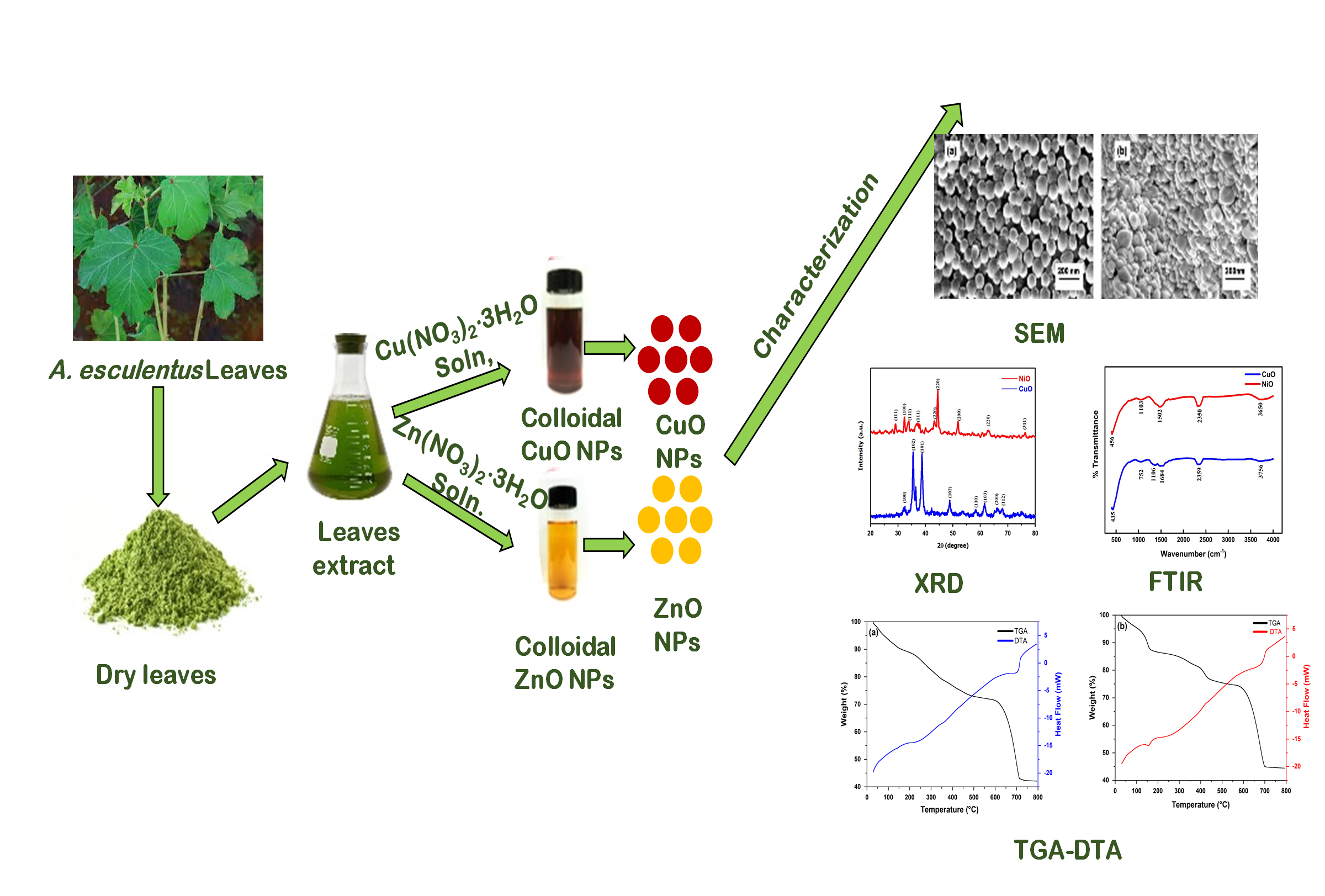
In this work, copper oxides (CuO) and zinc oxide (ZnO) nanoparticles were synthesized using Abelmoschus esculentus (A. esculentus) leaves extract by hydrothermal method and subsequently employed for degrading recalcitrant pesticide imidacloprid (IMI). The CuO and ZnO nanoparticles were characterized by UV–Vis, FTIR, XRD, HR-SEM and TGA/DTA. The band gap of CuO and ZnO nanoparticles has been calculated to be about 2.23 eV and 3.6 eV respectively. The average size of CuO and ZnO nanoparticles calculated were in the range of 24–33 nm and 18–35 nm respectively which was confirmed by HR-SEM and XRD. The XRD studies indicated that the synthesized nanoparticles have a face-centered cubic structure. Photocatalytic degradation study showed nanoparticles bear a good potential to degrade IMI. The degradation was found to be affected by the IMI concentration (10–70 mg L-1), solution pH (5–11) and photocatalyst dosages (0.1-0.5 g L-1). The optimum experimental conditions (i.e., Photocatalyst dosage = 0.5g, pH = 9, IMI conc. 30 mgL-1 and contact time = 50 min) for the photocatalytic degradation process using CuO and ZnO led to IMI removal of 99% and 81% respectively in 60 min. The pesticide degradation percentage in the case of CuO photocatalyst were outstanding and reached ~99%, while for ZnO photocatalyst it was ~81%. The Kinetic study showed that the degradation of IMI was well foreseen by pseudo-first order kinetic model. For CuO and ZnO photocatalysts the rate constants were 0.028/min and 0.0076/min respectively. The prepared photocatalysts showed excellent water stability and reusability.
Total file downloads: 24